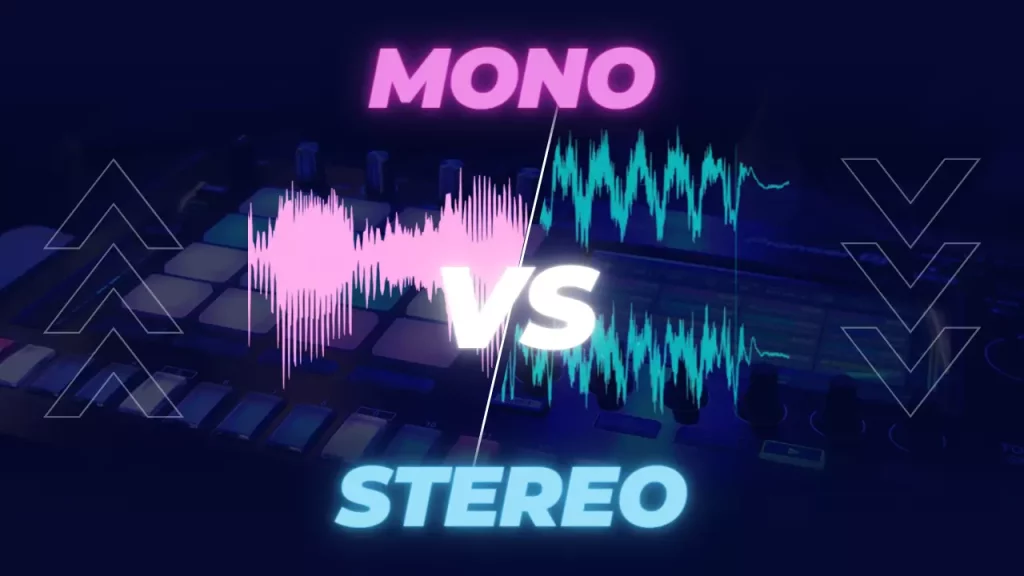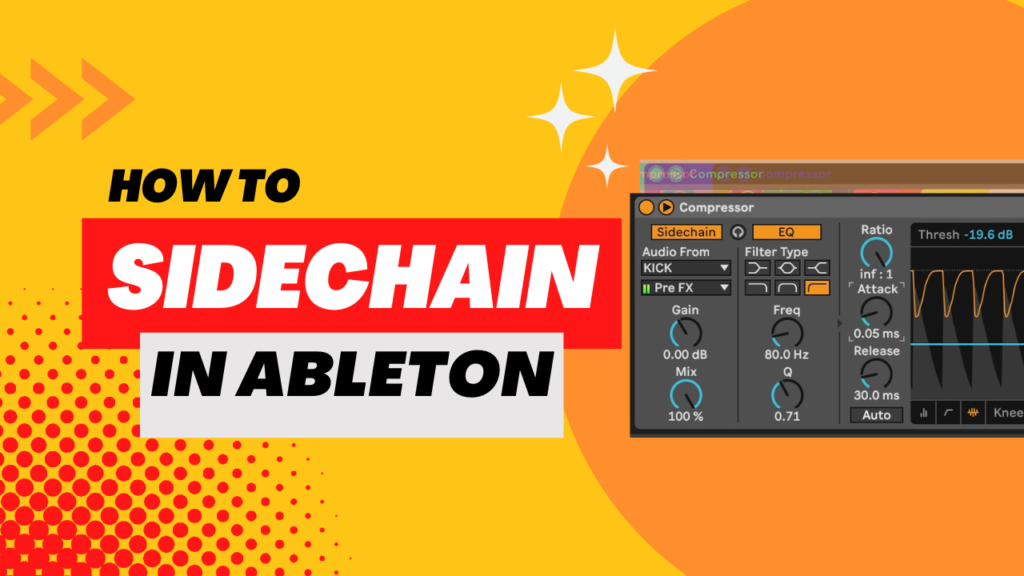In this article we will explain the difference in mono vs stereo audio configurations. We’ll explore differences between mono and stereo audio files, playback, and recording. You can use these concepts to take precise control of your mixes. Place things with intention, and ensure mono compatibility so your music sounds great no matter where you’re playing it. But what are the differences between them, and when should you use one or the other? Let’s explore!
Table of Contents
Mono vs Stereo
The difference between mono and stereo configurations is the number of audio channels use to record and monitor sound. Mono configurations use only a single channel, while stereo configurations use two. Stereo sounds can use differences between their channels to create the perception of width, used to “place” a sound in three-dimensional space, while mono sounds cannot.
What is Mono Audio?
Mono is a shorthand for monophonic sound. Derived from the Greek mono meaning “single” and phonic, from Greek phone meaning “sound” or “voice.”
As the name implies mono systems record and play back only one sound, called a channel.
The term has been used throughout history differently. The common modern usage was first coined in 1958, to designate mono broadcasts and recordings as specifically not stereo. In the late 1800s the term was used to designate a style of composition where one voice-part is dominant over any others. The term “monoaural” is technically interchangeable, though rarely used.
If you look at a mono audio file in your DAW or audio editor, you will see that it contains only one waveform, representing the single channel.

What is Stereo Audio?
Stereo is a shorthand for stereophonic sound. Derived from the Greek stereo meaning “solid” and phonic, from Greek phone meaning “sound” or “voice.”
Stereo configurations record and play back two channels of sound, designated “left” and “right.”
We’ll explore below how these two channels work together to create a “solid” sound as the name implies.
Most professional and consumer audio files you’ll encounter are stereo formats. WAV and MP3 files are common examples. Drop one into your DAW or audio editor and you’ll see that it contains two waveforms — one each for the left and right channels.
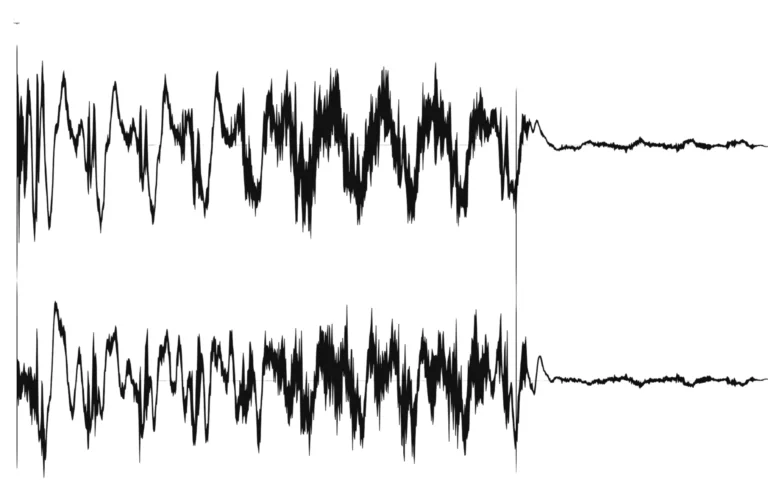
Mono vs Stereo Playback
Now that you know the technical differences between mono and stereo sound, let’s explore how the listener’s experience is impacted.
Mono Playback
As you might expect, since Mono signals play back only one audio channel. This means that the singular audio signal is sent to all speakers in a system, regardless of how many there are.
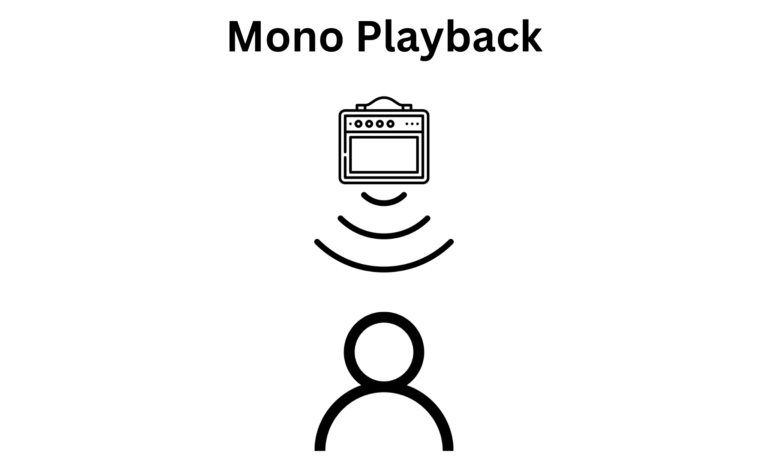
Even if played through a system with one speaker, a stereo system with two speakers, or other setups with multiple speakers, the sound output will be exactly the same. Since the output is the same, adding more speakers won’t change the sound at all — it will just make everything louder.
And because there is only one sound, a listener perceives the sound is coming from one single position, or source. This can be useful in mixing. For example if you want a sound coming from a single direction — usually lead vocals, bass, or a kick drum.
Because mono playback systems use only a single audio channel, they can only create a flat, or two-dimensional image. That is to say mono recordings can be higher or lower in pitch or frequency, or they can be pushed further back or brought forward. But, the single channel doesn’t allow for the differences between channels needed for a listener perceive sound as having any width. (More on this in the stereo image section, below).
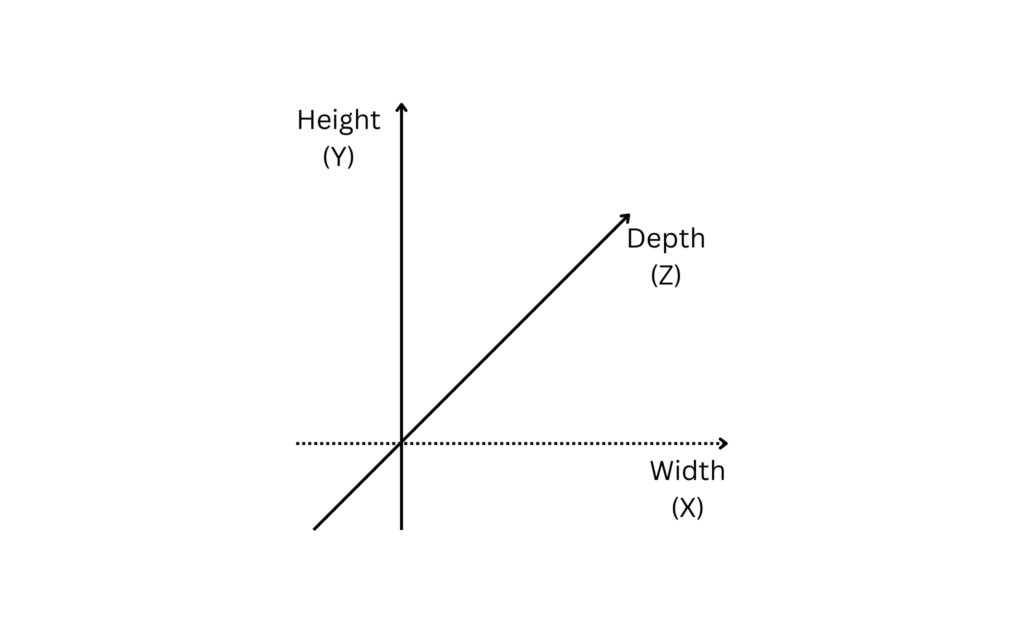
Because of this some people think mono can sometimes sound narrow or unnatural. But, in some situations, like clubs, where there are a lot of speakers pointing in too many different directions to clearly define “left” and “right” mono is very useful. This is why it’s extremely important to make sure music you produce (especially if you’re producing electronic music) is mono compatible. See our section on mono compatibility below.
Stereo Playback
Stereo audio uses two audio channels, one for the left speaker and one for the right speaker. These channels are played simultaneously, and the left and right speakers are intended to be heard as a unified sound.
Where a mono audio signal sounds like it’s coming from a single location, a stereo signal can create the impression of a specific location in three dimensional space. This is called sound localization.
Sound Localization
There’s a very obvious parallel in nature to a two channel system: your ears! a stereo audio system can use differences between how your ears hear a sound to manipulate your brain into “locating” the sound in a space. Let’s look at an example:
If you were having a conversation with someone with your eyes closed and they started to walk in circles around you, you would hear a difference in their location. If at any point in this circle they stopped and asked you to point at their location, you probably could. You would also likely be able to gauge about how far away from you the person is.
Some people would assume that two channels of output would cause them to hear two distinct and separate sounds in each of the stereo speakers. While that can be true in some configurations — like some dual mono configurations — it’s not always the case.
Stereo systems manipulate your brain by using differences in how each ear hears a sound. When the channels in stereo audio files sum together differences in timing, frequencies, dynamic range, and reverb between the left speaker and the right speaker affect where your brain locates a sound in space.
Let’s dive into some of these concepts.
Dual Mono Audio Files
Some stereo audio files actually contain two separate audio tracks. Usually, they share a common source, but are intended to be processed separately. These are referred to as dual mono audio files. The main difference between these files and stereo files is that the audio channels are independent, and not intended to be heard as a summed cohesive sound.
Check out our full deep dive on Dual Mono vs Stereo if you’d like to learn more.
But how does this relate to playback through stereo speaker systems?
Phantom Mono Audio
Refer back to the examples of sound systems, above. When the left and right channels both play a mono signal, they produce the exact same sound. Because of this, you’ll perceive the sounds’ source as exactly between the speakers.
This is called a phantom mono sound source, because the sound source is not a true mono playback system with only one channel. The true sound sources are stereo outputs, positioned evenly out to the sides, producing the same sound as if it were a mono system.
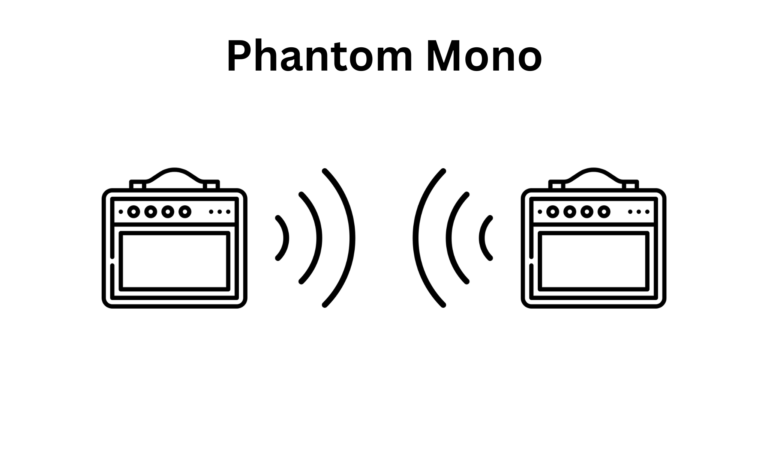
This is how many DAWs like Ableton, natively handle mono audio files. Take a look at a mono audio file in Ableton, and you’ll see it still has two channels, but they are identical.
How, exactly, is this phantom mono created?
As we mentioned, your brain partially relies on timing differences to determine the position of a sound. When a sound source is positioned physically closer to one ear, the sound waves will reach that ear before the other. In the image below the left channel is closer to the listener than the right channel.
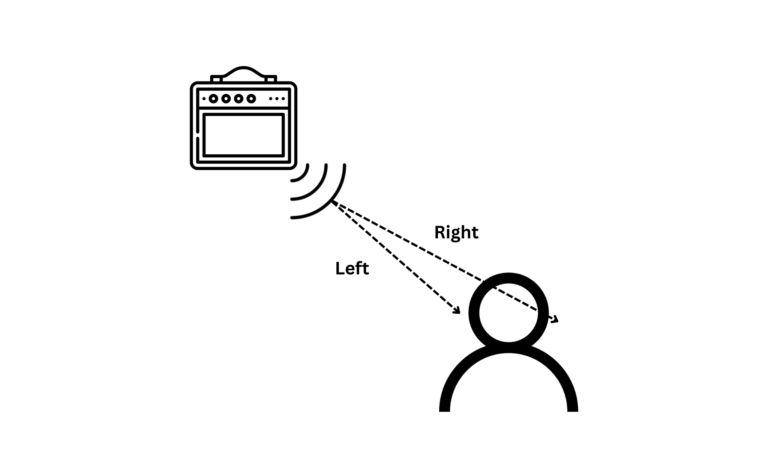
However, if you make an equally distanced but oppositely positioned output with a second speaker, the stereo audio creates the illusion of a single audio source directly in front of you.
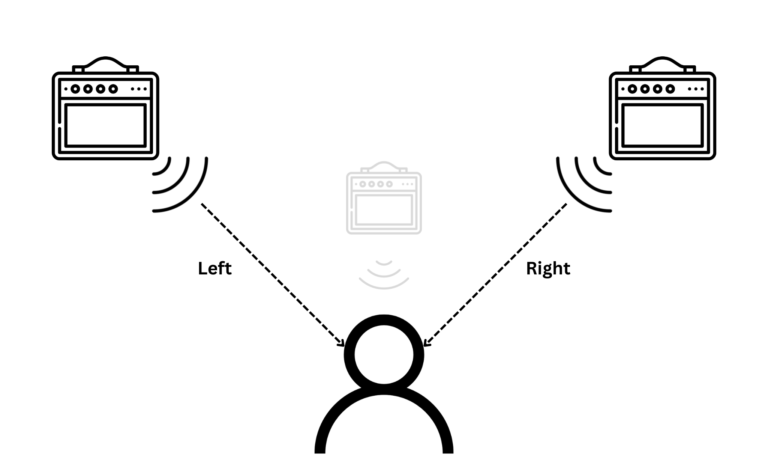
The Stereo Image
In this example, if differences are introduced on one channel and not the other, you will hear these sounds as “wider,” or, farther apart on the horizontal “X-Axis” stereo field.
As a producer, you can manipulate these differences to create width and other stereo effects that affect the height, on the vertical “Y-Axis”, and depth on the front-to-back “Z-Axis.”
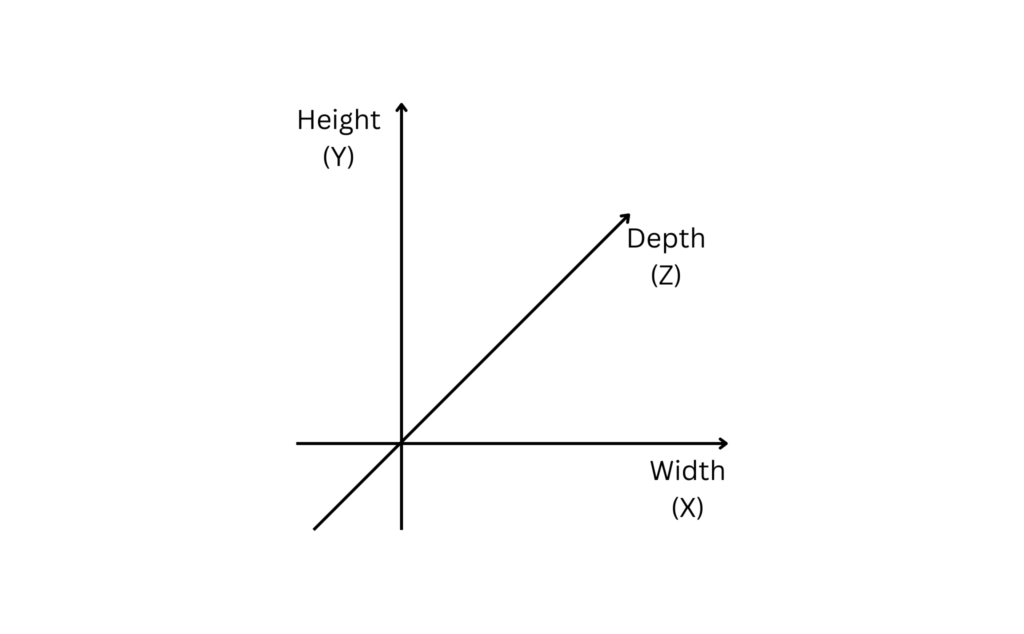
All together, the three dimensions allow a listener to perceive sound within a physical space, known as a stereo image.
This is the critical advantage of stereo audio files, and why the name is derived from the Greek for “solid.” By manipulating the location of a stereo elements within the stereo field — or adjusting their stereo imaging — you can create a full, natural, sound with a more immersive listening experience.
The definitive book on this topic is David Gibson’s The Art of Mixing. The accompanying video can help you visual stereo imaging. You must listen with headphones you’ll get great insight into comparing the visual and audio representations of how a stereo mix is comprised of elements within the stereo field. If you’re in need of a great pair of mixing headphones to help you compare mono vs stereo, check out our guide here.
A sound’s frequency determines it’s position on the Y-Axis in the stereo field. This an easy one to remember, because we use the same words to describe the pitch. High frequency sounds are literally higher in the mix. Typically, bright sounds like high hats will sit above the other elements in a mix. Conversely, low frequency sounds like a bass guitar will be positioned below the high hats.
Depth, or a sound’s position o the Z-Axis in the stereo field. Usually you’ll hear a producer say they want to “bring a sound forward,” or “push it back” in the mix. The most direct way to affect depth is to a change a sound’s level relative to other elements of the mix. But, a sounds’ dynamic range and reverb play a part, too.
As a rule of thumb, lower levels and less dynamic range are pushed back in the stereo field. Logically, a sound produced physically far away from you will sound quieter. High amounts of reverb also push an element back in the mix.
LCR & 50/50 Panning
A straightforward approach to placing elements within a stereo field is “LCR” which stands for “Left, Center, Right” and 50/50 panning.
In this method elements have a defined place in the stereo field. Vocals, kick drum, bass, and snare, sit front and center. But, every other element should either be panned fully or halfway to the left or right.
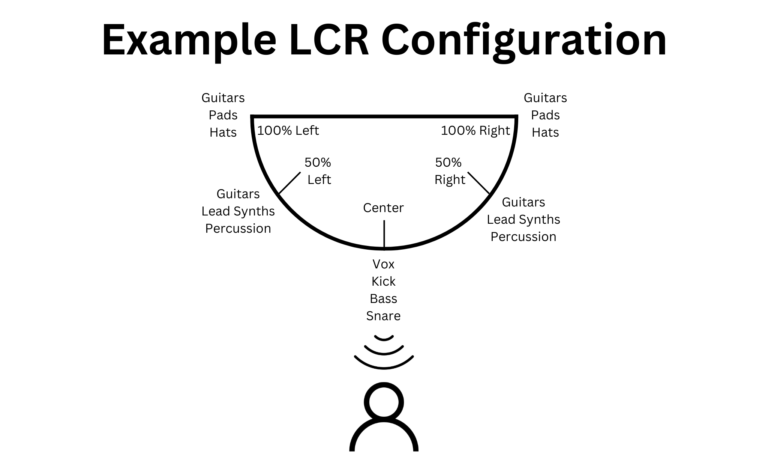
Is stereo louder than mono?
There is no technical difference between mono and stereo audio files that allow one to be louder than the other.
Stereo audio is not inherently louder than a mono signal. But, you may perceive it as louder. If the same signal is being produced from the left speaker and the right speaker, without any differences between them to create width, you will just be creating a phantom mono signal.
Conversely, the extra width and presence of a stereo recording can make that more immersive listening experience actually perceive sound as louder.
Mono vs Stereo Recording
The differences in recording mono sound and stereo sound align exactly with the differences in format and playback. Mono recording uses a single microphone to capture a single channel of audio. As discussed above, you can play back mono tracks on a system using either one or, a pair, or more speakers
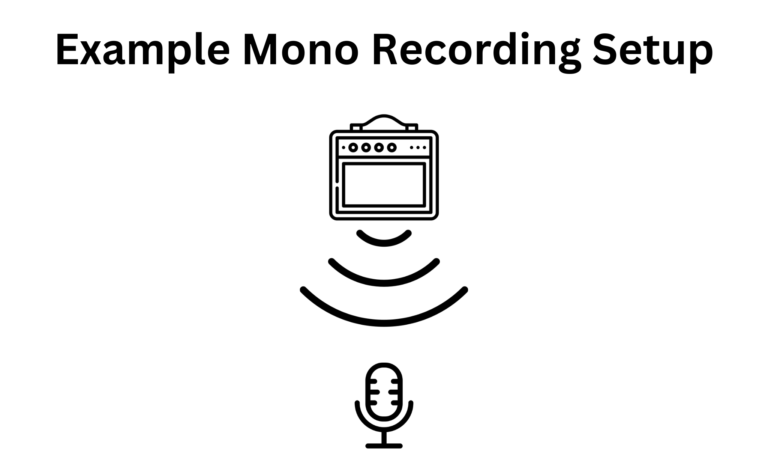
Playing back mono on a stereo system utilizes the dual mono configuration discussed above, where one audio channel is duplicated identically on both stereo channels.
Likewise, stereo recordings require using two microphones. Again, these two microphones correlate to left and right channels. You can simply think of the left microphone as being your left ear, while the right microphone is your right ear. Processing a stereo recording typically involves panning one channel left and the other right.
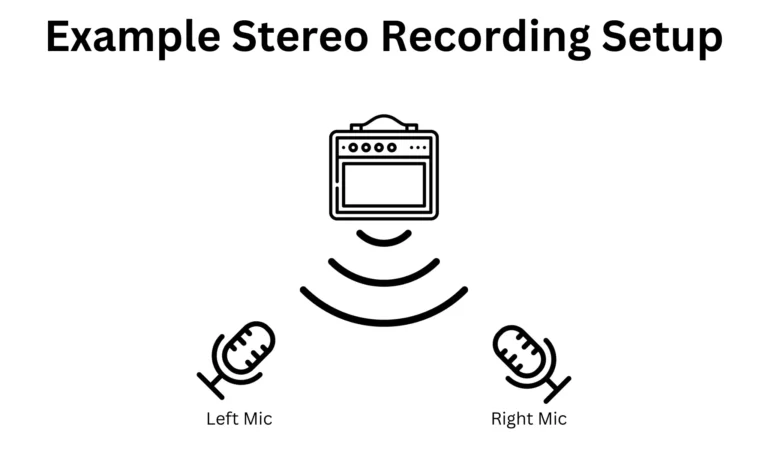
The width of the image of your recording is correlated to the angle of the microphones used in recording. Larger angles create a wider image.
Mono Compatibility
As we mentioned above, one thing modern producers should keep in mind is mono compatibility. Simply, this means taking steps to ensure that your finished stereo tracks will sound good on both stereo systems and mono systems.
A vast majority of consumer audio systems are stereo. And, most likely, this is how your listener is going to experience your music. But there are many instances where it’s important for your track to sound good on other sound systems. Most phones have only one speaker, and club systems, as discussed above, are often mono systems.
Usually, this means checking the mono compatibility of your mix frequently. In Ableton you can do this with a simple utility on your master chain.
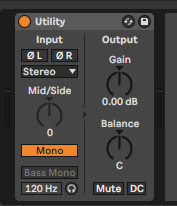
Some recording techniques, like the X-Y technique can help you achieve mono compatibility.
This is where you get the old adage to “mix in mono” and reference your song on different speakers to ensure compatibility on a various sound systems.
Can I Make a Mono Track Stereo?
Short answer: no, there is no way to “convert” a mono signal into a stereo signal.
But, there are plenty of ways to add width to a mono sound. These include using stereo imager plugins. I’m partial to the Izotope Ozone imager, the Waves S1, and Infected Mushroom’s free plugin, Wider.
You can also use Abelton’s stock delay plugin to create the Haas effect, adding width to a sound. There are also a number of stereo effects, like chorus, that can add width to a mono sound.
Conclusion
There is no ultimate “better” in the Mono vs Stereo conversation, but there is a “better suited for your needs and preferences.
Mono tracks have a single audio channel. They create a singular sound when played back over various speaker systems that is perceived to have a single, fixed position in space. For this reason mono systems can be great when there are too many speakers to have a clearly defined left channel and right channel. But, they can also sound narrow, and unnatural for this reason.
In contrast, Stereo Audio uses two channels, intended to be summed together. The differences in these channels can create a realistic three dimensional soundscape.
| MONO | STEREO | |
|---|---|---|
| CHANNELS | 1 | 2 |
| COMPATABILITY | Mono files can be played on any system, regardless of the number of speakers | Stereo files will need to be checked for mono compatibility before being played on a mono system |
| LOCALIZATION | All audio is perceived as having a single point of origin | Listeners can experience sounds coming from multiple directions |
| PERCEIVED VOLUME | All audio is front and center, perceived as loud. | Can seem louder, despite no actual dB level difference, due to impression of depth and space. |
| IMAGE | 2-Dimensional Image that lacks width. | 3-Dimensional image with height, depth, and width. |
Most modern systems are stereo systems, and the average listener will say it creates a more realistic sound. Especially for listening in headphones, car speakers, and home stereos.
But, in places like clubs that have multiple speakers, using a stereo system may cause phase cancellation issues, making mono the right choice.
Ultimately, how you utilize specific sounds in your productions is up to you. But regardless, its important for you to ensure your tracks sound great on all sound systems so listeners can enjoy them no matter where they are.

